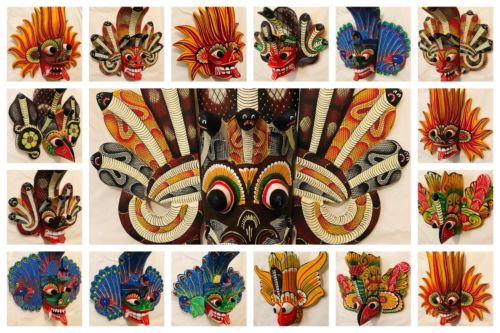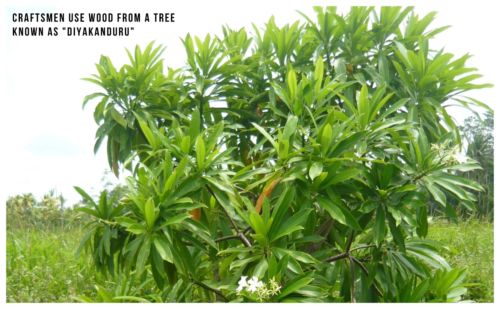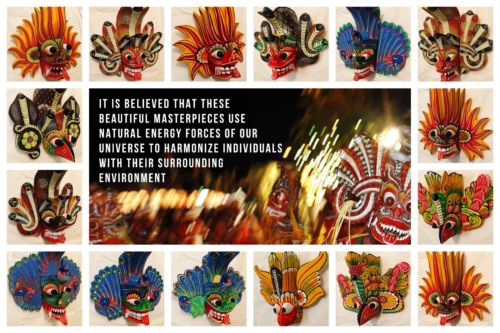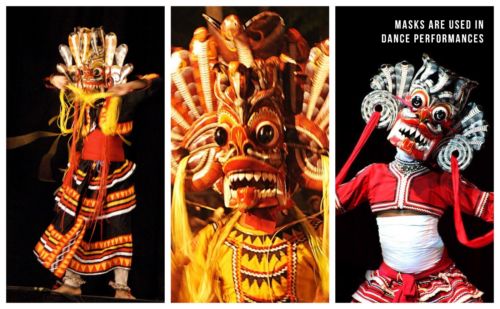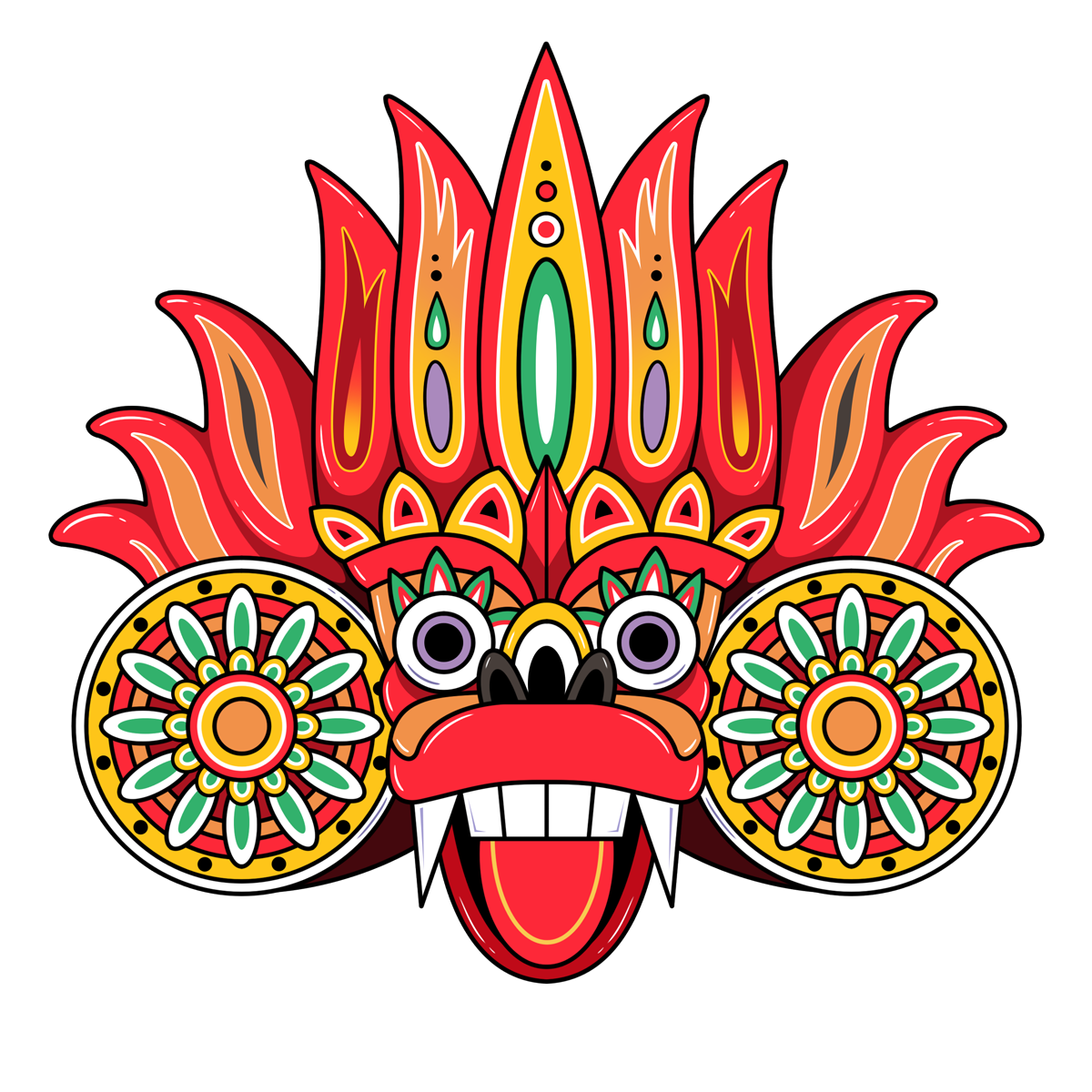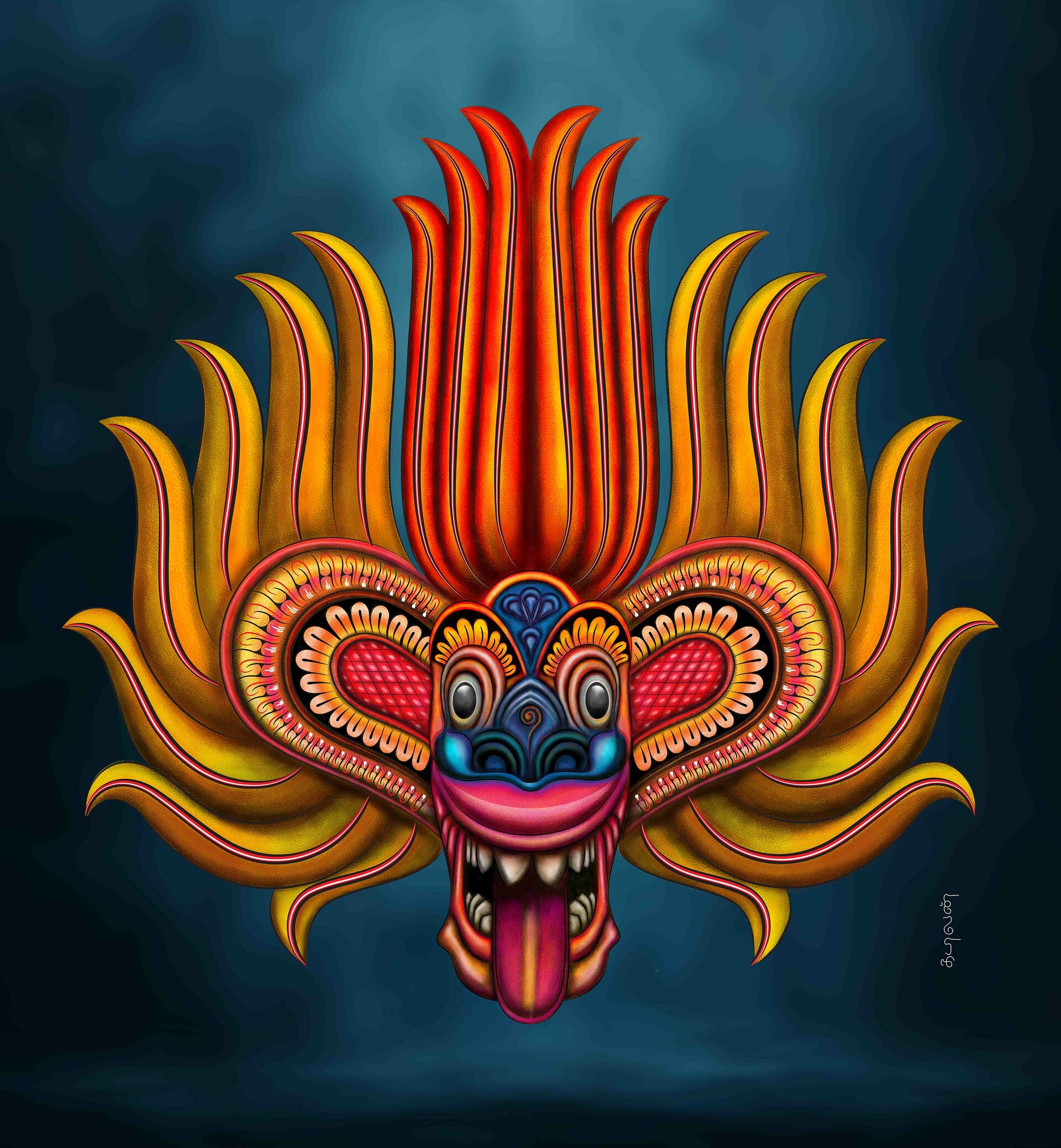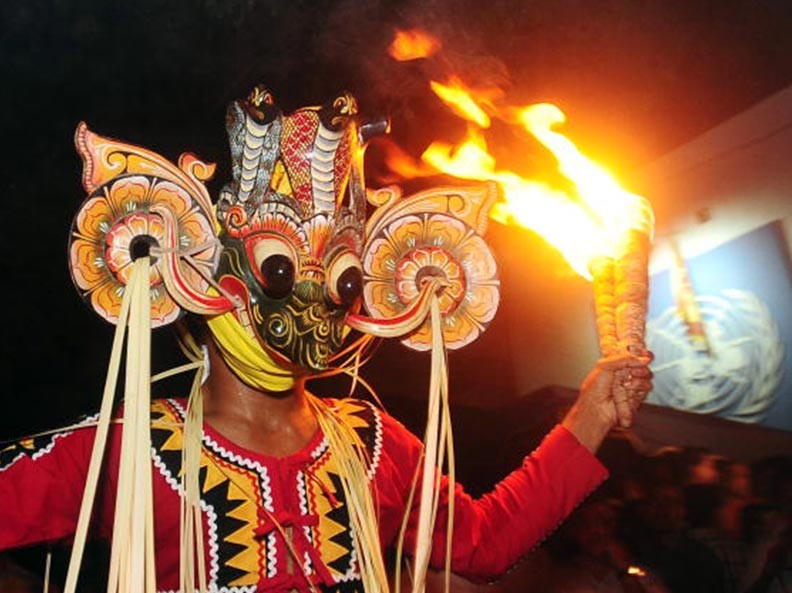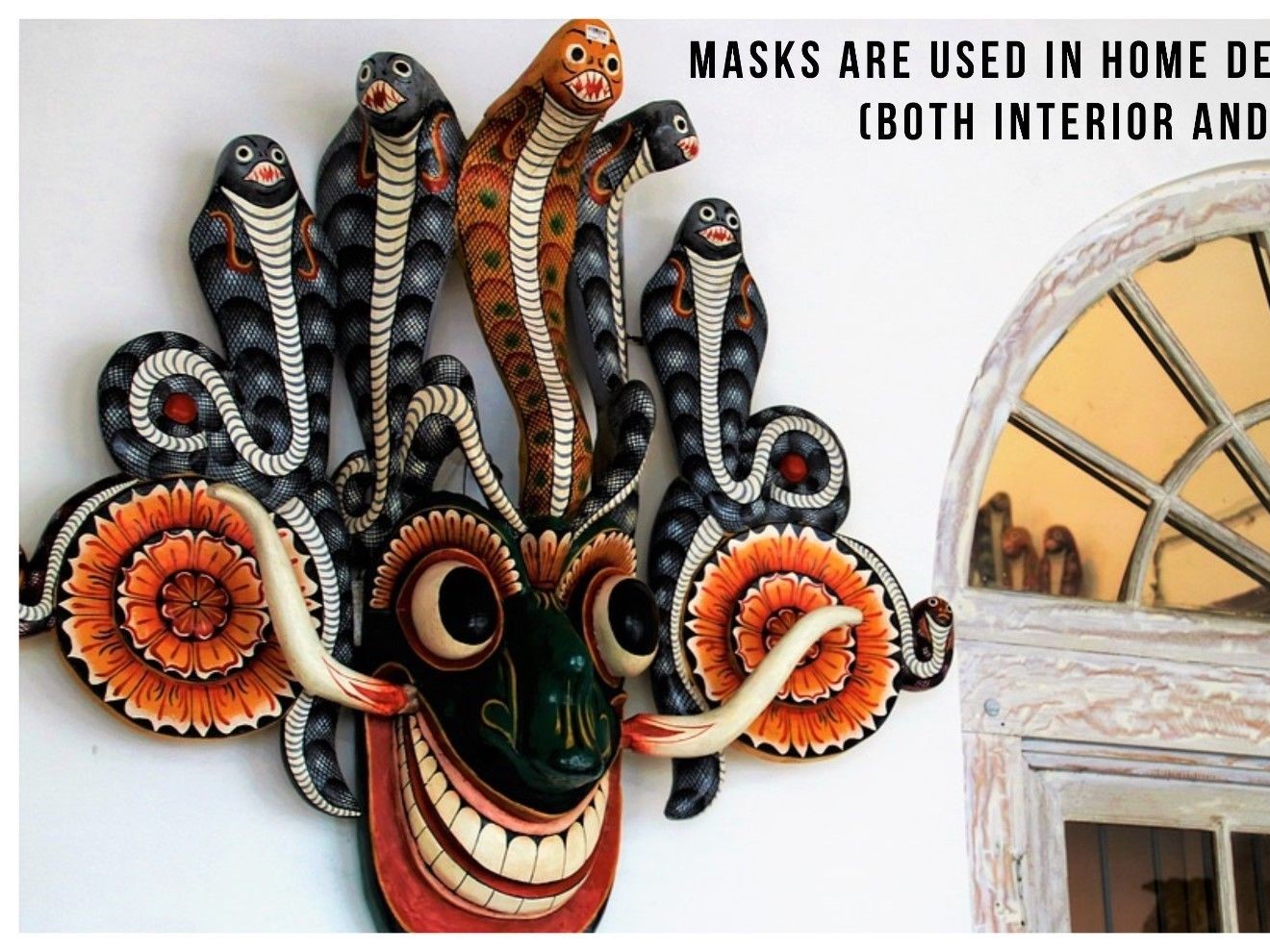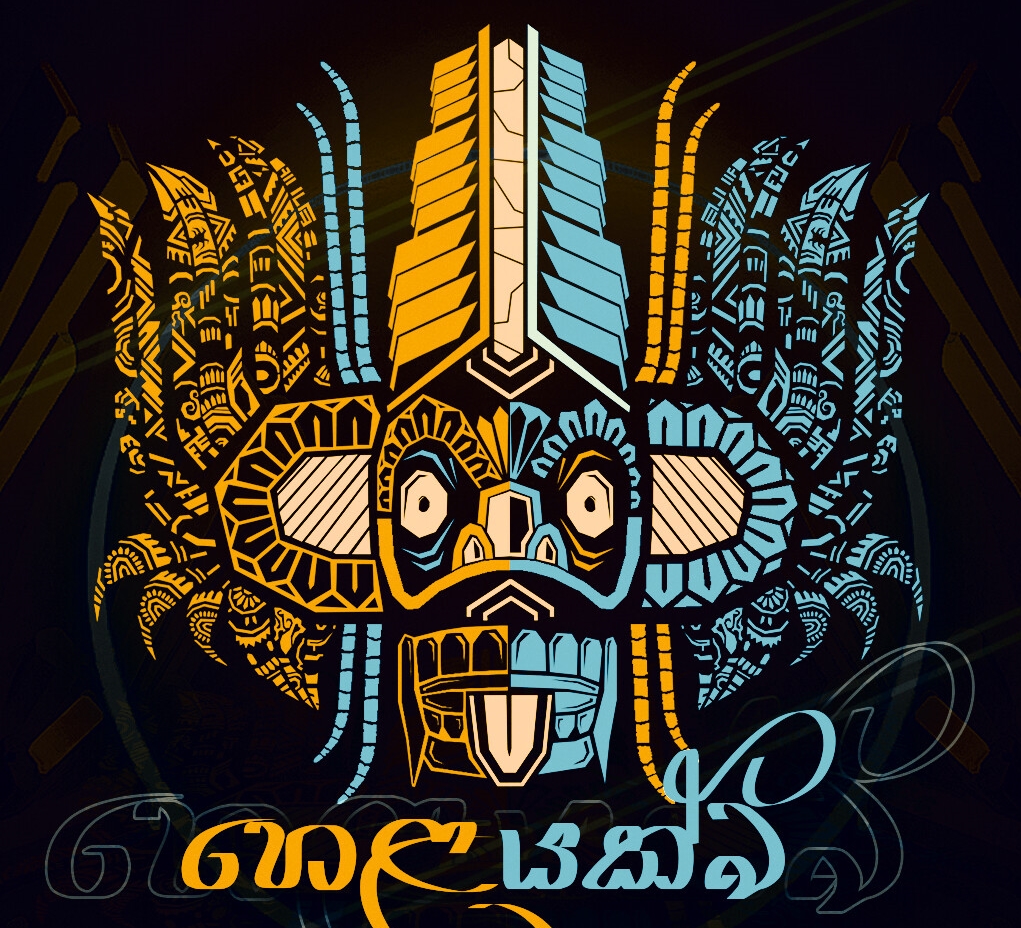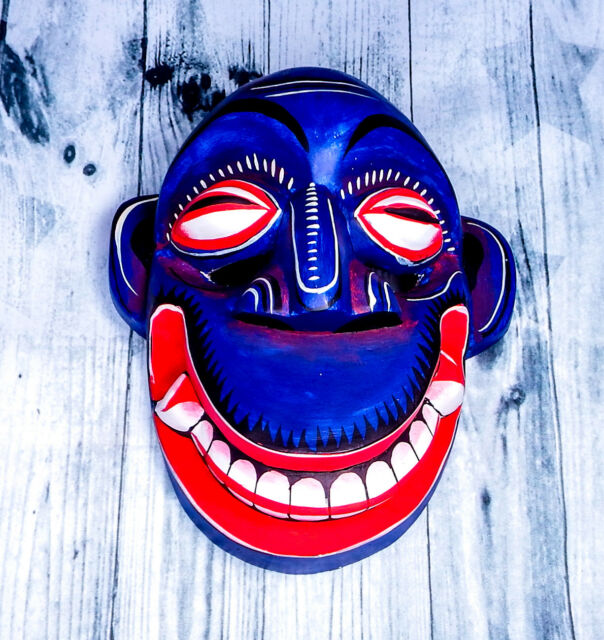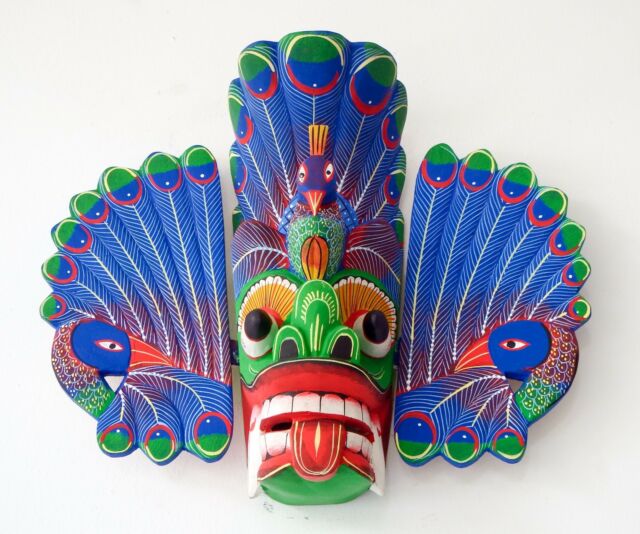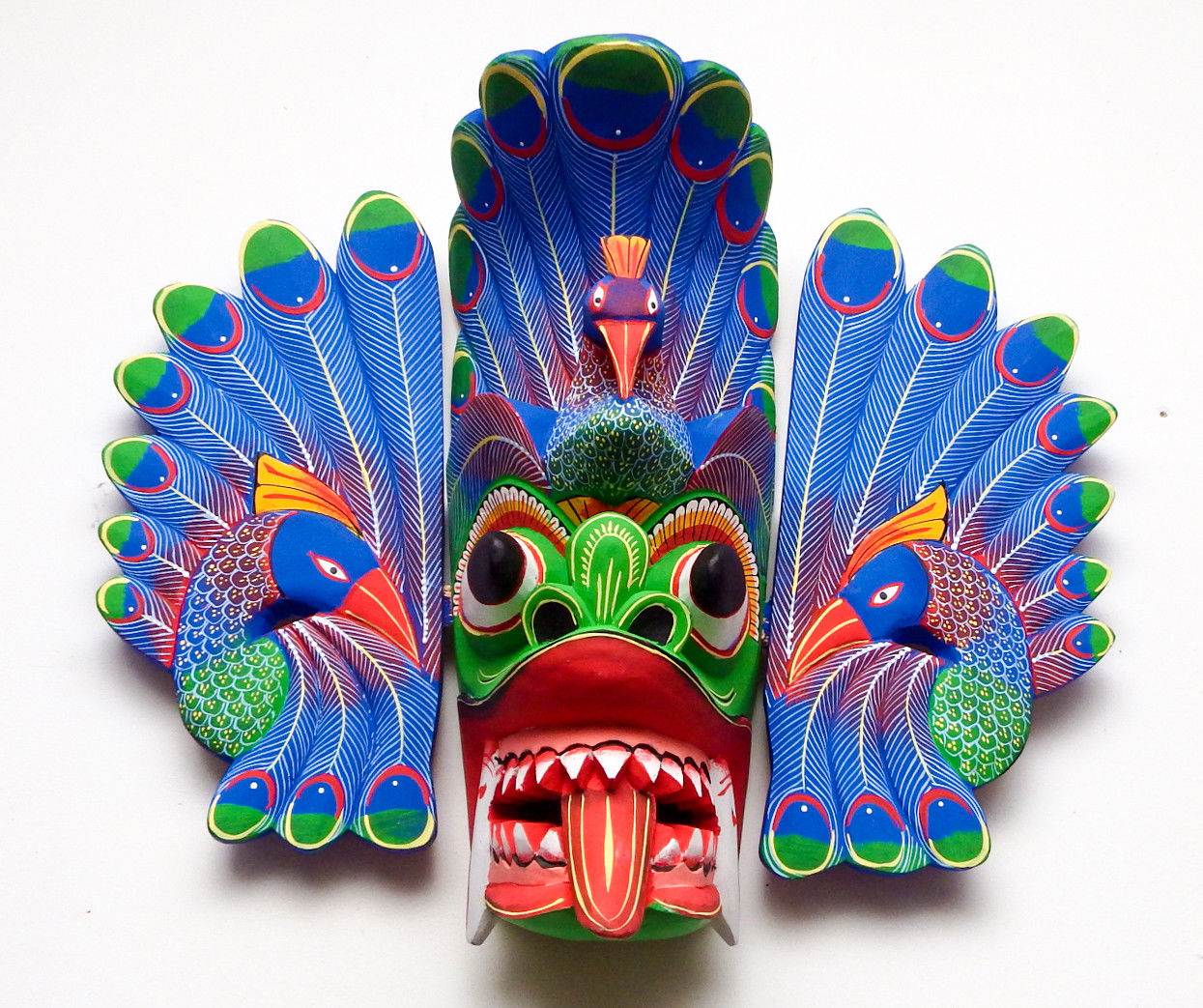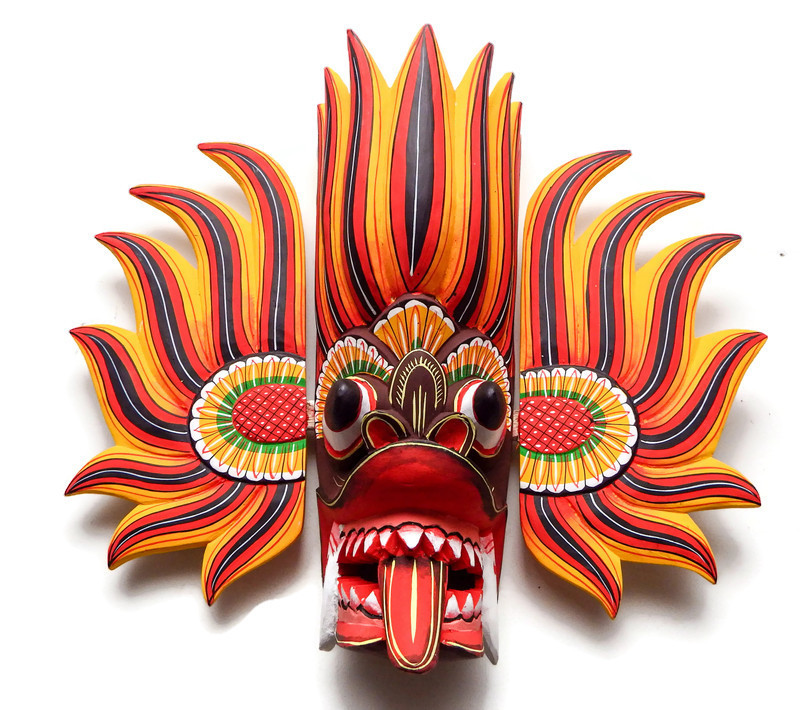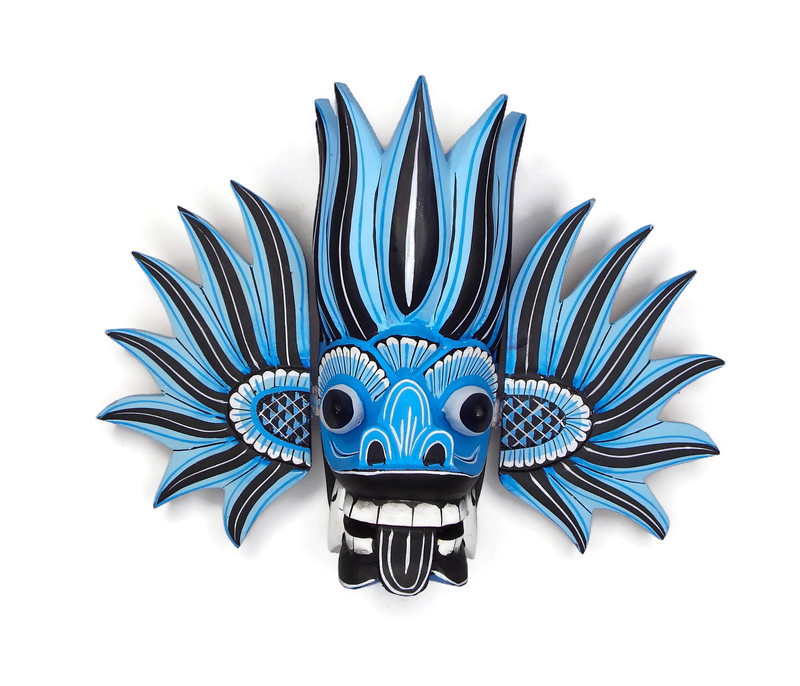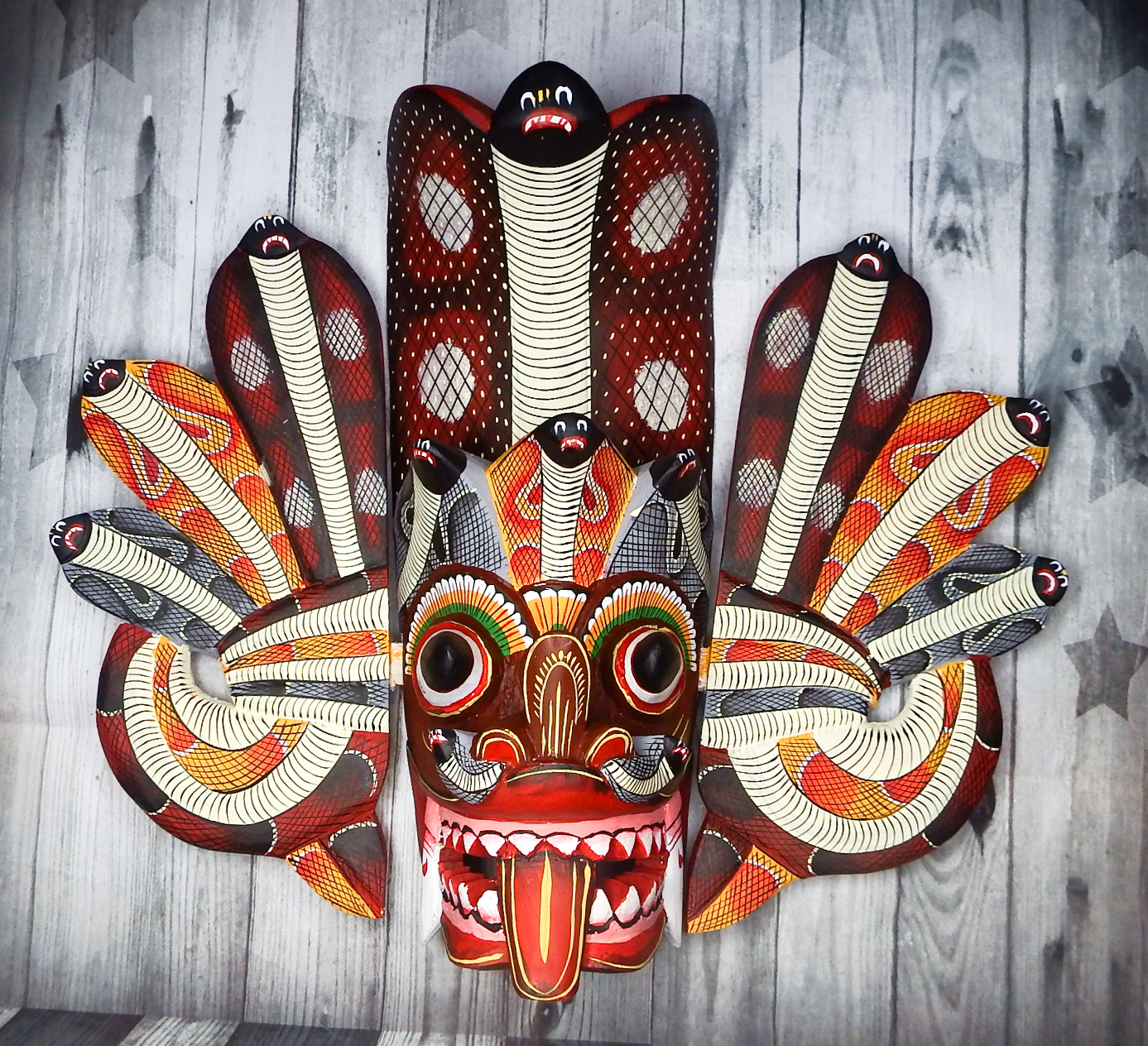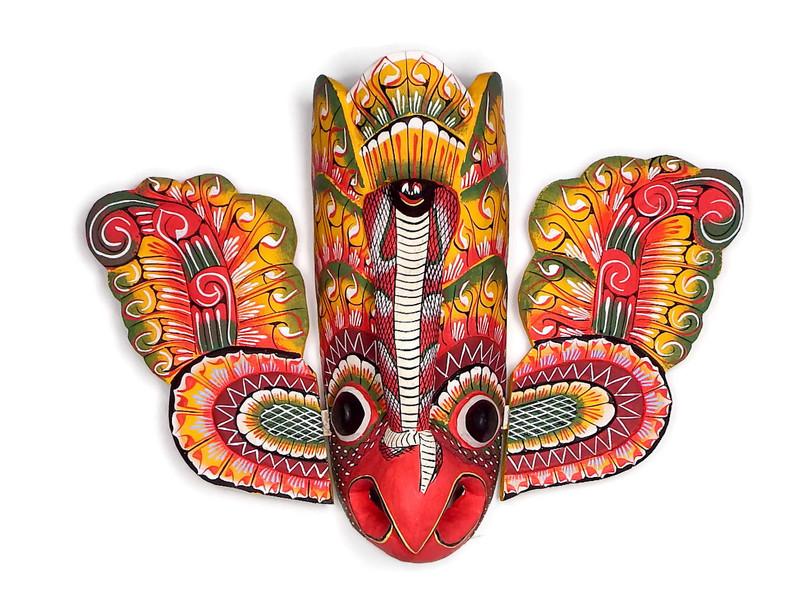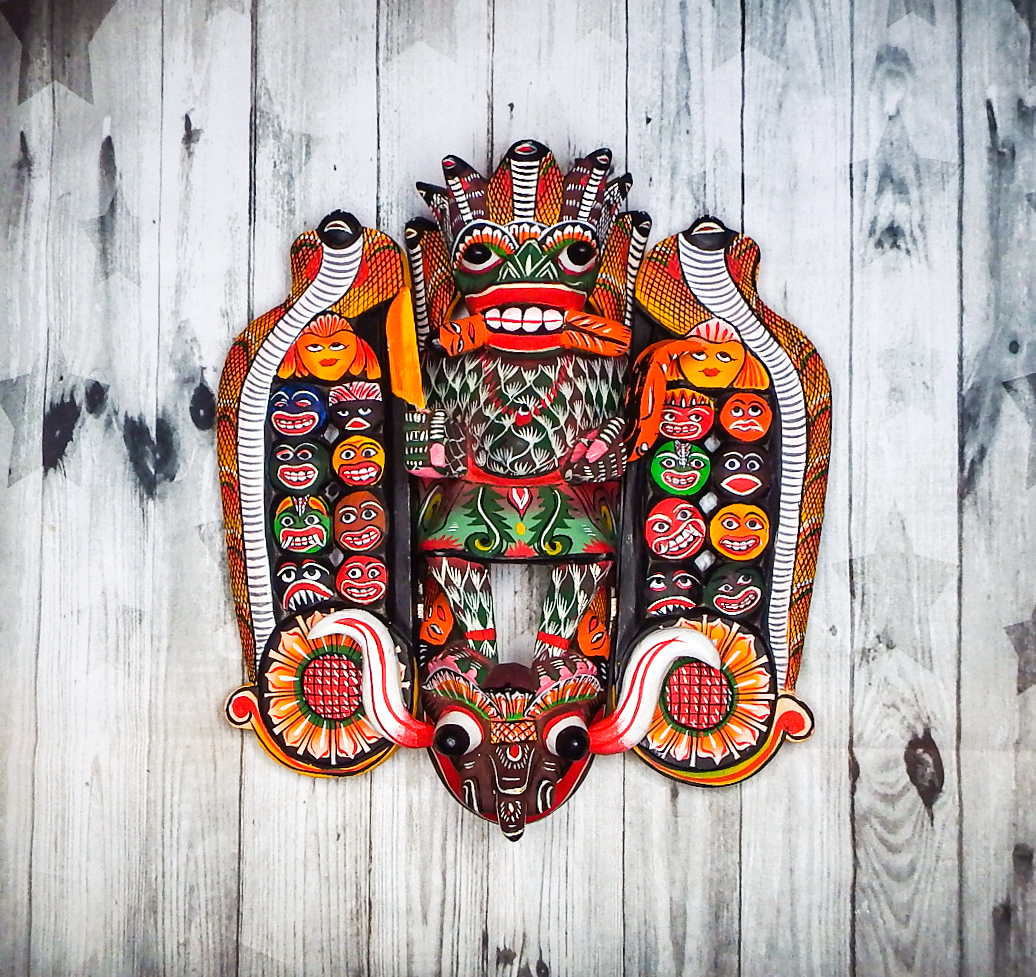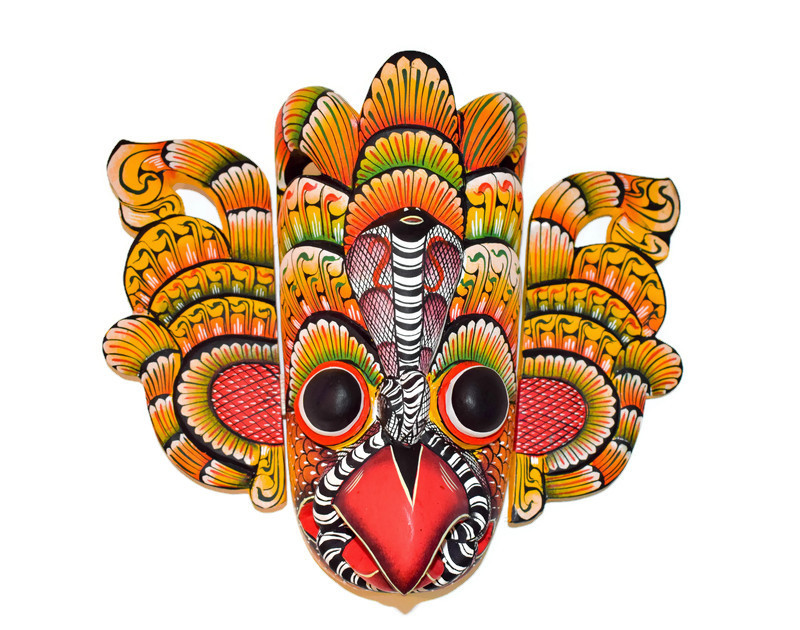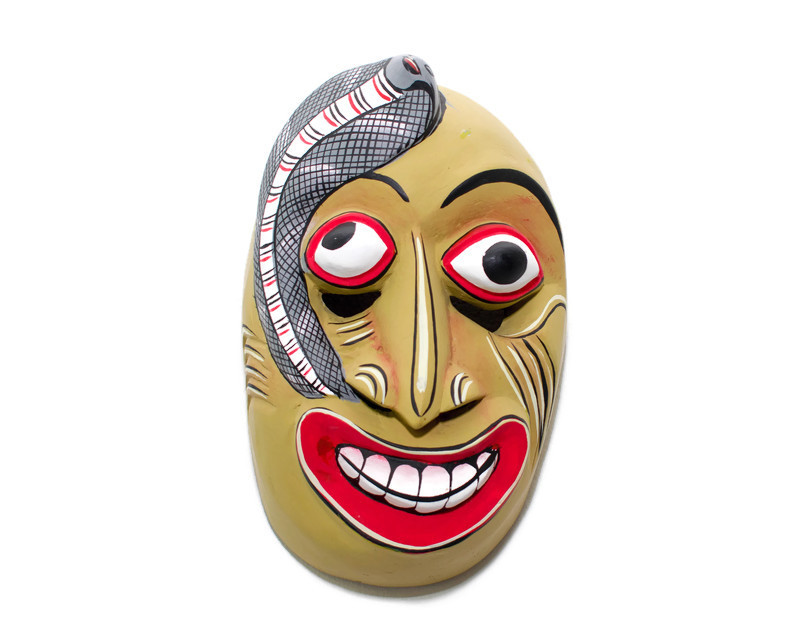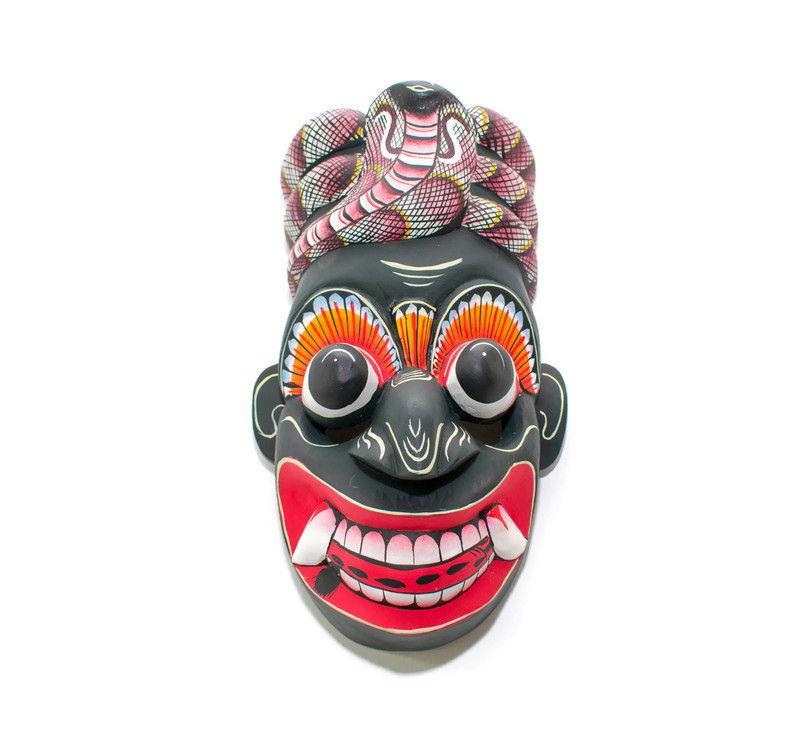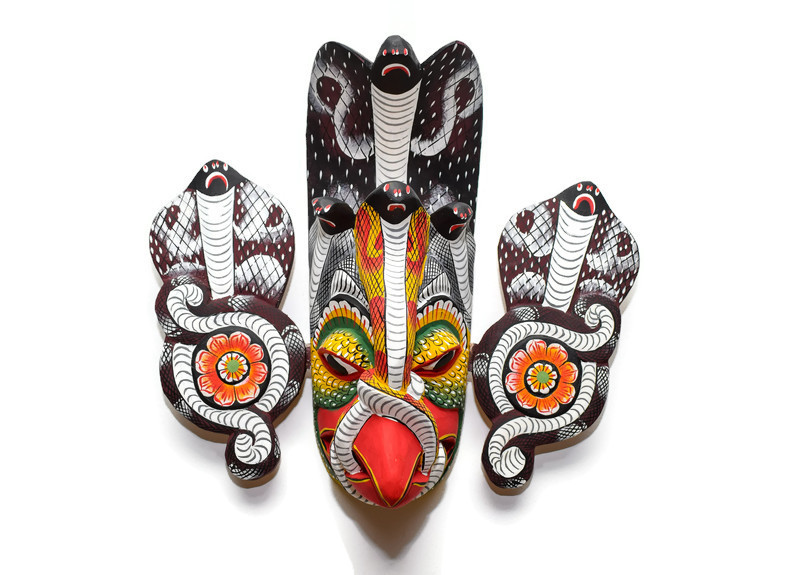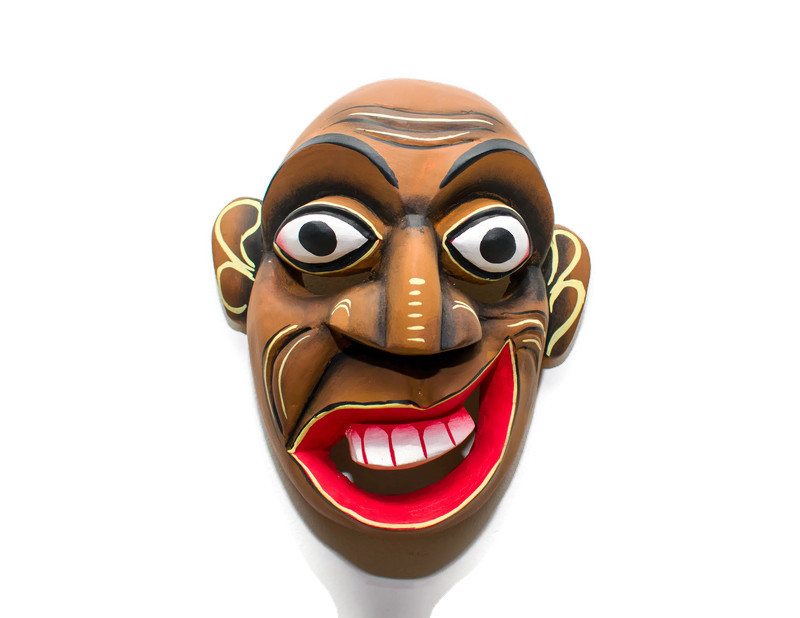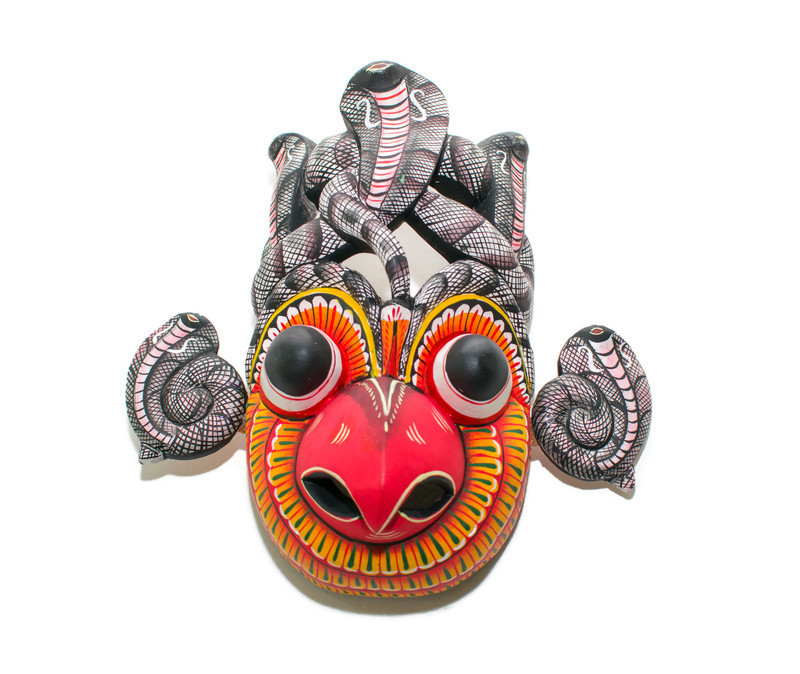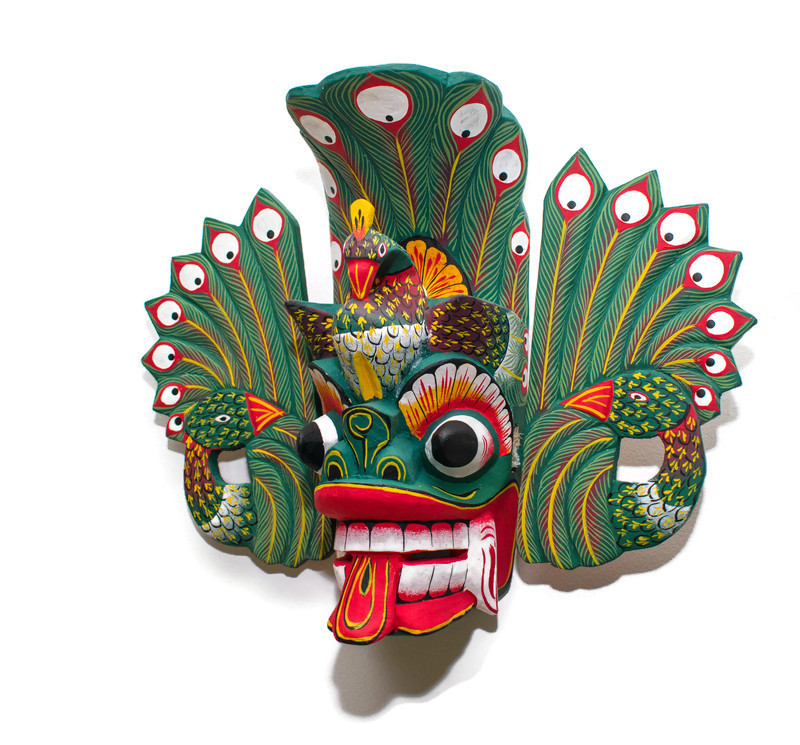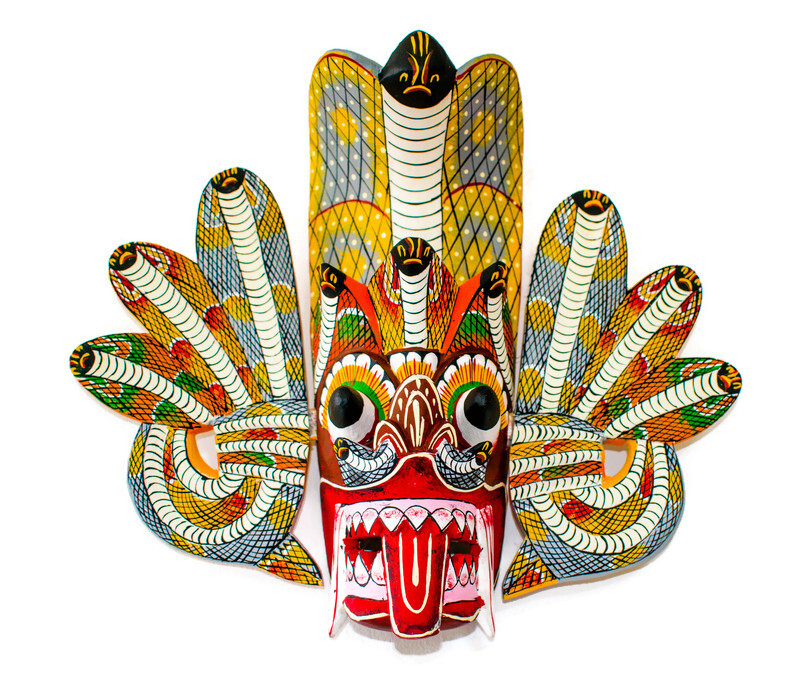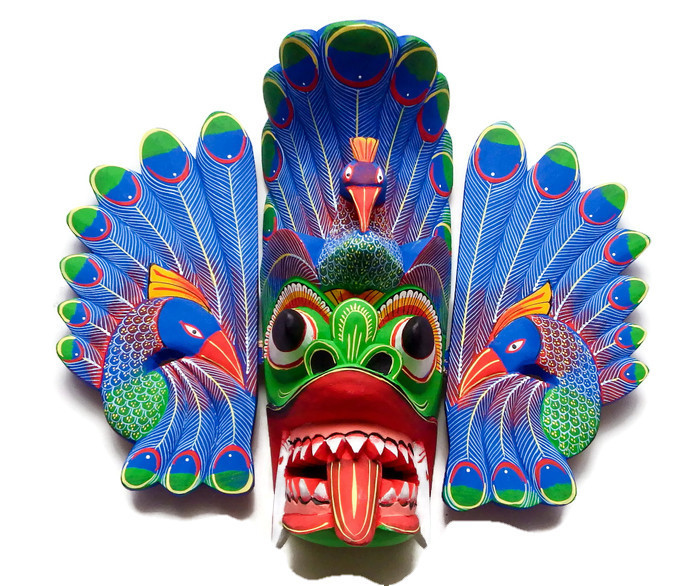- Details
- Written by Manoj
- Category: General
- Hits: 3204
Sri Lankan Medical System
Lanka, the land foretold by the Buddha to be the stronghold of Buddhism in the time to come; Ceylon, a colonial outpost for the Portuguese, Dutch and British in succession; the Spice Isle, source of teas and spices which titillated the world; Screndip, an almost mythical paradise. Sri Lanka, home to some of the world’s most beautiful landscapes and the scene of seemingly endless turmoil and bloodshed, has had many names and wears many faces.
Sinhalese have been renowned since the first century B.C. when the northern capital in Anuradhapura boasted some eighteen hospitals. Traditional Ayurvedic principles practised for centuries-balancing internal humours to promote and modify health-are now being studied and implemented by many Western healthcare professionals. But predating these systems, and stretching far back into antiquity, there has been an alternative system of healing, a system based on early Vedic concepts of aetiology, in which diseases and ills of all sorts were believed to be caused by demons. Identified predominantly by the symptoms manifested by the patient, these demons could be summoned and exorcised in stylised ritual mask dances, or natima.
The various natima of Sri Lanka belong to that great Asian mask tradition which extends from the Indian subcontinent, across the high Himalayas, through the Southeast Asian archipelago, northwards onto the Siberian plains and into Korea. Within these diverse cultures the masked shaman plays a central role, bridging the gap between the natural and the omnipresent supernatural. Through various transformation rituals the shaman blurs these perceived boundaries, comforts his community, diverts evil and effectuates healing.
In Sinhalese society the edura works alongside the rest of society. He wears no special clothes, as a monk would, nor is he granted special status. He lives within the community with no divisions. It is only when his special services are required that the edura sets himself apart. Much of the preliminaries and ritualised aspects of the masked dance rituals are designed to distance the edura from the rest of society.
Through a complex and sophisticated mixture of theatre and drama, which includes wearing special clothes, burning his own body and simulated death experiences, the edura creates a space where in his mind and in the mind of his fellow villagers he "becomes" something other and takes on the essence of and personifies the afflicting demon.
Most important to this transformation both visually and psychologically are the fantastic masks worn during these rituals. Representing specific demons and the maladies they inflict upon man, the masks allow the edura to embody, at least temporarily, demons which normally exist only on a supernatural plane. This personification allows for dialogue and, amidst frenzied dance and ritualised chants and speeches, provides an opportunity to discuss the troubles facing the individual and the community. The edura, cloaked in the power and visage of the demon, creates a visible and immediate link between the natural and the supernatural. As the embodiment of the afflicting demon he cites causes for disease, discusses immediate concerns for the community, and following the reception of a tribute, he promises to lift the illness: tindui nivarani ("it is done").
Sinhalese Cosmology
The cosmology of traditional Sri Lankan beliefs is a complex mixture of native Vedic gods, spirits, and demons, overlaid with imported Hindu and Buddhist deities, beliefs, and practices. This pantheon is vast, filled with hierarchies and sub-hierarchies which the uninitiated finds nearly impossible to grasp. The synthesis is a spiritual landscape where Buddha reigns supreme, but where the day-to-day is fraught with danger from the yakku (devils) and other malignant forces (vas) which seem all too ready to afflict man with scourges of every description. In this word, life is a constant struggle against these forces.
Central to this struggle are the natima devil dances-masked dance ceremonies to cure diseases, help failing crops (4), prevent drougth, and provide protection for troubled pregnancies (5). A cast of specific characters and dramas have developed over the centuries to counteract almost every affliction and ailment. The yakun natima, and the kolam natima (masquerade dance) represent two of the historically prominent forms these dance rituals have taken. Masks used in these rituals provide wonderful insight into the belief systems and practices which form the core of traditional Sinhalese beliefs regarding health.
- Details
- Written by Manoj
- Category: General
- Hits: 10677
Sanni yakuma, sometimes known as Daha ata sanniya is a traditional Sinhalese exorcism ritual. The ritual consists of 18 masked dances, each depicting a particular illness or ailment affecting humans. These 18 dances are the main dances of the Pahatharata, or low country, dancing form, which is one of the three main dancing forms of Sri Lanka. The ritual calls the demons who are thought to affect the patient, who are then told not to trouble humans and banished.
Every demon has an identity, a story. Unlike among the Balinese, where demons often represent types (i.e., hero, villain, clown, etc.), the Sinhalese yakku represent individual demons whose lineages and exploits are recited and commemorated. The masks used in the various rituals are carved to represent particular demons and can, with some exceptions, be specifically identified. Although the yakku. seem limitless in number, there is a core group of eighteen which form the focus for the yakun natima rituals.
Known as the daha-ata sanni yakka, these demons represent specific afflictions, both mental and physical, which commonly afflict the Sinhalese villagers. Although the number eighteen has now become standard, indications are that this number has decreased over time. Nor are the identities of the eighteen consistent. Different areas, or even different communities within the same area, will count different demons among the list.
Paul Wirz, in his seminal work Exorcism and the Art of Healing in Ceylon (1954), lists the following demons and their effects: Kana-sanniya (blindness), Kora-sanniya (lameness/paralysis), Gini-jala-sanniya (malaria), Vedda-sanniya (bubonic plague), Demala-sanniya (bad dreams), Kapala-sanniya (insanity), Golu-sanniya (dumbness/muteness), Biri-sanniya (deafness). Maru-sanniya (delirium). Amuku sanniya (vomiting), Gulma-sanniya (parasitic worms), Deva-sanniya (epidemic disease, i.e. typhoid, cholera), Naga-sanniya (evil dreams particularly with snakes) (7), Murta-sanniya (swooning, loss of consciousness), Kala-sanniya (black death), Pita-sanniya (disease related to bile) (8), Vata-sanniya (shaking and burning of limbs), and Slesma-sanniya (secretions, epilepsy).
Surveys by individuals such as Alain Loviconi and E.D.W. Jayewardene, have demonstrated significant differences between various areas and the impossibility of creating a universally recognised list. One area might include 0lmada sanniya (babbling) and another area Avulun sanniya (breathing difficulties, chest pains). Contemporary ethnographers such as Obeyesekere have also noted the addition of certain more contemporary maladies to the list. For example Vedi sanniya as relating to gunshot wounds, dramatically reflecting the change in times and the adaptability of this indigenous system.
Although there is no single, uniform list or all eighteen demons, certain demons do seem consistent and universal, such as Biri for deafness, Kana for blindness (9), and Golu for dumbness.
Presiding over these eighteen yakku is the demon known as the Kola sanni yakka (10), a composite demon containing and regulating the other eighteen. In the yakun natima it is appeasing the Kola and gaining his benediction that is most important. His origin story, as recorded by Wirz, is as follows:
A certain king left for a great war, leaving behind his queen. He was unaware that she was pregnant. Upon his return he found his wife to be in an advanced state and ready to give birth. A handmaid to the queen, through lies and deceptions, convinced the king that it was not his child but that of the war minister, who had remained behind. In a fury he ordered the queen tied to a tree and cut in two. The child managed to survive, living off the remains of his mother. As he grew, the child vowed revenge on the father.
He gathered poisons from the different parts of the forest and formed them into eighteen separate lumps which transformed into demons. Kola sent these demons into the city and charged them to “capture humans and cause illness through wind, phlegm, and bile”.
Origins
It was believed that illnesses were brought on humans by demons and these beliefs and rituals could have prehistoricroots. According to folklore, the 18 demons who are depicted in the Sanni Yakuma originated during the time of the Buddha. The story goes that the king of Licchavis of Vaishali suspected his queen of committing adultery and had her killed. However, she gave birth when she was executed and her child became the Kola Sanniya, who grew up "feeding on his mother's corpse". The Kola Sanni demon destroyed the city, seeking vengeance on his father, the king.[5] He created eighteen lumps of poison and charmed them, thereby turning them into demons who assisted him in his destruction of the city.[6] They killed the king, and continued to wreak havoc in the city, "killing and eating thousands" daily, until finally being tamed by the Buddha and agreed to stop harming humans.[7]
Each of these demons are believed to affect humans in the form of an illnesses, and the Sanni Yakuma ritual summons these demons and banishes them back to the demon world after bringing them under control.[7] Although it is unclear when the ritual began, it has been performed in the southern and western parts of the country since ancient times.
Ritual
The name of the ritual comes from the Sinhala word sanniya meaning disease or ailment, and yakuma meaning demon ritual. In Sri Lankan culture, exorcism rituals are known as tovil. The Sanni Yakuma is possibly the best known exorcism ritual in the country.[10] It is a mix of traditional beliefs regarding spirits with Buddhism. Before performing the healing ritual, the lead performer known as the yakadura determines whether the patient is affected by a demon, and schedules the ritual for an auspicious day and time, usually from dusk to dawn.[13] The Edura or Yakadura is the Shaman healer and is usually a fisherman, drummer or farmer.[4][14] It has two main stages, namely the Ata Paliya and Daha Ata Sanniya.[15] The dancers are dressed in colourful attire and masks, and perform swift and complex dance steps and spins accompanied by rhythmical drum beats.[16] Rather comic and somewhat obscene dialogues take place between the drummer and the demon on stage, in which the demon is humiliated.[15][17] For example, Moore and Myerhoff (1977) describe the following dialogue translated from Sinhala:
Drummer: Where are you off to?
Demon: I am off to Maradana by a first class express bus.
Drummer: ...What was it I saw you doing only yesterday? You pissed near the sacred bodhi tree, then shitted on the temple grounds after which you stole a monk's robes. What else have you done? ...
Demon: You peretaya![N 2]
Drummer: Aah – you are only a mad demon – beneath contempt.
Ata Paliya
Ata Paliya is the name given to the eight dances in the first stage of the ritual. Before the dances begin, the Yakadura prepares some offerings for the demons, which will be given to them by the patient. The Ata Paliya depicts eight palis who bless the patient. This includes the Suniyan Yakshaniya who appears thrice as a beautiful damsel, a pregnant woman and a woman carrying a baby. This is followed by Maruwa (death) and demons called Kalu Yaka, Vatha Kumara and Kalu Kumara. The other palis are known as Anguru Dummala Paliya, Kalaspaliya and Salupaliya.[18]
Daha Ata Sanniya
Although the Daha Ata Sanniya is part of the Sanni Yakuma, the name is sometimes used to refer to the ritual itself. This is the stage when the sanni demons make their appearance one after the other. The demons who first appear frightening when they enter the stage in frenzied dances are then shown as comic figures through enactments, with them being humiliated and forced to do various things. The Kola Sanni demon enters last, who is depicted as a non Buddhist demon. In the end, he is made to obtain the permission of the Buddha and accept offerings from humans, and agrees to stop troubling them.[19] In the end, the dancer appears before the patient after removing the mask.[20]
Although there are only eighteen demons, there is a variety of sanni masks that differ from place to place.[12] However, the eighteen most commons masks (and names of the demons) are as follows:[21]
| Demon | Associated ailment |
|---|---|
| Amukku Sanniya | Vomiting and stomach diseases |
| Abutha Sanniya | Non–spirit related insanity |
| Butha Sanniya | Spirit related insanity |
| Bihiri Sanniya | Deafness |
| Deva Sanniya | Epidemic diseases |
| Gedi Sanniya | Boild and skin diseases |
| Gini Jala Sanniya | Malaria and other high fevers |
| Golu Sanniya | Dumbness |
| Gulma Sanniya | Parasitic worms and stomach diseases |
| Jala Sanniya | Cholera and chills |
| Kana Sanniya | Blindness |
| Kora Sanniya | Lameness and paralysis |
| Maru Sanniya | Delirium and death |
| Naga Sanniya | Bad dreams about snakes |
| Pissu Sanniya | Temporary insanity |
| Pith Sanniya | Bilious diseases |
| Slesma Sanniya | Phlegm and epilepsy |
| Vatha Sanniya | Flatulence and rheumatism |
Current status
The Sanni Yakuma is still performed today, particularly along the south coast, though more often as a cultural spectacle than an exorcism ritual. However, it is not widely performed because of the high costs involved and also because of its long duration.[9][18][22] The 2004 Indian Ocean earthquake and tsunami also has affected its survival.[23][24] Though the coastal regions came under colonial influences as well as prior foreign influences, the art was best preserved in the south-west coast.[4][14]
- Details
- Written by Manoj
- Category: General
- Hits: 5035
Traditional Sinhalese Exorcism Ritual (18 Sanniya)
There are many rituals in practice in the world which are based on various folk beliefs. The primitive man being unable to understand the natural world thought that an invisible force was instrumental in causing numerous sufferings and illnesses in life, began to perform various rites to propitiate that force to be free from such ill effects. In addition to such rites there were many other rites too performed by him based on the worship of the dead. Such rights were performed with the belief of fulfilling the mundane aspirations of the living through the benevolent effects of the splendor, power and the blessing of the dead. Such rites were among the Sri Lankans too from the ancient times and with the passage of time such rituals, beliefs and rites have developed into various ceremonials rituals performed for various gods, demons and planets. They exist in the form of three main divisions as upcountry, low country and Sabaragamu traditions in terms of various local and provincial dancing traditions. In the low country tradition of dancing there are many rituals of devil dances (yak thovil) performed for demons. The sanniyakuma or the Sanni dance is prominent among them and its genesis which is linked to the Licchavi dynasty is given briefly as follows;
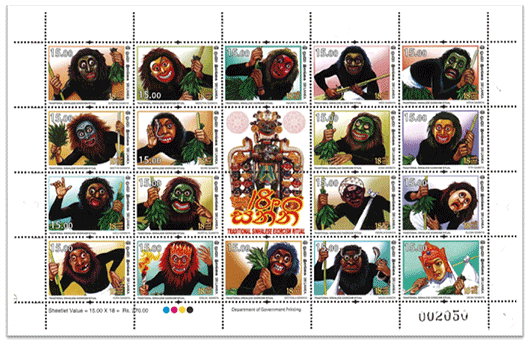 The consort of king Sankhapala of the Licchavi dynasty was named princess Asupala. After the marriage with the princess the king had to go out for a battle with the kingdom of Kuru. Although by that time the queen was pregnant, there was no time for the king to come to know about it. In the mean time the queen had a desire to eat a delicious variety of mango (mi amba) and she told about that to the chief minister. Since it was off season there were no mangoes to be found in the entire city though extensive searches were made. The chief minister who managed to come by a mango which had matured out of season brought it to the queen. At the same time there was a female attendant of the palace who too was pregnant and had the same desire of eating mango. On seeing the queen eating mango she asked for a piece of mango. The queen who was greedy for eating sweet mango ate the entire fruit without giving even its seed to the servant. The female servant who became very angry decided to take revenge on the queen.
The consort of king Sankhapala of the Licchavi dynasty was named princess Asupala. After the marriage with the princess the king had to go out for a battle with the kingdom of Kuru. Although by that time the queen was pregnant, there was no time for the king to come to know about it. In the mean time the queen had a desire to eat a delicious variety of mango (mi amba) and she told about that to the chief minister. Since it was off season there were no mangoes to be found in the entire city though extensive searches were made. The chief minister who managed to come by a mango which had matured out of season brought it to the queen. At the same time there was a female attendant of the palace who too was pregnant and had the same desire of eating mango. On seeing the queen eating mango she asked for a piece of mango. The queen who was greedy for eating sweet mango ate the entire fruit without giving even its seed to the servant. The female servant who became very angry decided to take revenge on the queen.
In the mean time, the king was returning to the palace having won the battle and going forward to welcome the king, the female servant poisoned his mind against the queen telling him that the queen was with child having committed adultery with the chief minister during his absence. The king, having seen the queen’s belly believed the story and ordered that she be executed. Despite the repeated attempts of the queen to prove her innocence, the king called the executioners and ordered them to take her to the cemetery and hang her and cut the body into two halves. The executioners took the queen and having hanged her on a pubberiyatree killed her by cutting her body into two halves with the sword. One half of the body fell at the root of the tree and on account of the meritorious karma of the royal prince in the womb, the other half too fell down and attached to the other thereby giving smooth birth to the prince. The newly born baby who had nothing to feed on, grew feeding on the flesh and blood of the dead mother. As a result of eating human flesh he got a grotesque appearance. The prince, having grown up determined to take revenge on his father for killing the mother, made 18 lumps of poisonous fruits and leaves of the forest and making 18 Sanni demons entered the city of Licchavi and began to destroy it. It is said that the prince became the chief Sanniyaka or Maru Sanniya and the 18 followers took the form of the Daha-ata Sanniya. It is also believed that after the city of Visala was plagued with the three fears, the Ratana Sutta was recited and the demons were expelled thereby making the city free from the three-fold fears.
There are three local traditions of the Sanni dancing ritual as Bentara, Matara and Raigama. Although the Raigama school of dancing is similar to that of Bentara school it is performed similar to the Gam Madu ritual in terms of the style of dance, decorated costumes and dialogues used. In the Matara tradition ritualistic performances are done in a style of dance with use of dialogues which are unique to that tradition.
Following is the ritualistic pattern observed in the Daha-ata Sanniya or Sanni Dance of the Bentara tradition:
- Summoning of the aturayaor the sick man to the bower (pandala)
- Beating of auspicious drums (magulbera)
- Inviting gods Natha, Vishnu, Kataragama and Pattini to the flower bed.
- Reciting dishti mantra and raising of the curtain
- Rituals of the evening time and placing of atamagala(eight auspicious objects) items at the foot of the sick man
- Dancing of pandampada of the evening ritual
- Ushering of KaluYaka
- Ushering of KaluRiriYaka
- Ushering of the three apparitions of Suniyamyakkhini
- Ushering of AbhimanaYaka
- Peduruupatha, death ritual and the entry of Maruva
- Dancing of dekonavilakkusamayama (ritual dance with torch burning at both ends)
- Dedication of Kapalapideni (oblation)
- Kumara procession or Licchavi dance
- Pali dance
- Daha-ataSanni dance
- Offering of blessings
- Transfer of merits to gods and beating of merit drums (pin bera)
The main decoration in a Sanni dance ritual performed around Sanni devils is the Sannividiya or street. It is known by other names too such as Sankhapalavidiya, Sanniyakumvidimalawa, Kapalavidiya etc. In the Matara school it is known as mal maduva or flower shed. There are several verses compiled for Sanni demons who are mainly given offerings in the Sanni dance. In the yagaor ritualistic literature there are two main categories as verse and prose. In the prose category there are invocations, mantras and dialogues and there are many categories of verses also compiled in the four-line metre. These verses composed consisting of three aspects such as the invitation to demons of diseases, dispelling diseases and expelling them are especially created in a manner that includes the stories of the birth of demons of diseases, seeking permission, the diseases caused, the manner of conducting rituals to dispel such diseases, invoking blessing, expelling etc.
In the composition of verses in different metres they are composed adhering to poetic features such as alliteration and rhyme. In the Sanni dance the drum beats used in respect of the respective demons are composed in a manner that suits the portrayal of the characters of the respective demons which cause the diseases.
The main ritualistic performances relating to Sanni demons in the Sanni dancing commence at midnight and at the beginning the story of the Sanni demons is narrated with the Licchavi dance or Kumara Pelapaliya (procession of princes). In the Mataraschool of dance it is known as the dance of Minister Suvanda Mal (Minister of Fragrant Flowers).Thereafter several processions are conducted to invite Sanni demons to the floor. Here the eighteen Sanni demons are invited and it is the practice at this stage to recite the verses meant for the object of offering and bless the sick man by performing the dance of the relevant offering. In the present days prior dances are performed wearing masks. After the entry of the MaruSanniya as the chief Sanni demon of the eighteen diseases, the Daha-ataSanniya is performed.
Depending on the different schools of Sanni dance there are slight variations in the appearance of Sanni demons on the floor. On certain occasions it is possible to observe the use of different names to identify the Sannis. The standard eighteen Sannis considered to be correct are given in the following verse.
ButhaAbutha, Amukku, VediVatath
BihiriBitha Kana Pith GoluMurthuth
DemalaGulma Kora GinijalSeethath
Naga Deva Daha-ataSanniyaveth.
However, in the Bentara school certain Witch-Doctors or yakaduras have not included the Bitha Sanniya and in its place have included the Kola Sanniya. The following verse makes it clear:
Butha Abuthada Kana Golu Bihirith
Vatha Guma Jala samanga Amukkuth
Naga Vedida Kora Pith saha Murthuth
Demala eginijal Devaya Kolath
However, the Kola Sanniya is not a Sanniya that reflects symptoms of diseases belonging to the Daha-ata Sanniya. It symbolizes the incident of the advent of the above demons in the island of Lanka.
It appears that the symptoms of diseases caused by Sanni demons can be compared with those of the local Ayurvedic system. Dances are performed using abstract physical movments in a manner that higlights the ill health situations of the relevan Sanniya accompanied with singing, the drum beat and dialogues portraying the nature of the character imitated.
vests, trousers, bells and anklets, there are costumes especially designed for Sanni demons.The string of foliage (athu vela) made using twigs of burulla/gurulla plant obtained from the surrounding environment on the day of the ritual, the waist band prepared out of the piruvataya (piece of cloth) which is five riyanas long supplied by the dhoby (hene mama) have beenadded to the main costmes used in the Sanni dance.
In the designing of hair, moustaches, beards ect. worn by performers in the Sanni dancing, very often black, brown and yellow colours were used in the past.Although they were made out of materials obtained from the natural environment such as hana (jute), niyanda patta, wetake roots, kitul and coconut fibre etc. in the past, in the present day artificial fibres are used for that purpose.
As stage items the athu mitiya (bundle of branches) and the walking stick are ued extensivey. While a replica of a gun is used for the Vedi Sanniya and a lighted torch (pandama) for the Ginijal Sanniya, a replica of a cobra is used in the Naga Sanniya. In the Deva Sanniya some use a simple replica of a muruthen kada (pingo of meals for Gods), a walking stick and a piruvataya (white cloth).
Dances are performed by actors wearing masks symbolysing the following diseases belonging to the eighteen diseases or Sannis:
Bootha Sanniya (Demon of Spirits)
Coldness of body caused by the disturbance of body wind and bile followed by pain in joints, nightmare, yelling and intermittent crying are the main symptoms of this sickness. In addition to those, it is considered that other symptoms such as body rashes and the insatiable desre to drink king coconut water are unique smptoms of this ailment.
Abootha Sanniya (Demon of Madness)
This situation affects the mental condition of the sick person. It is caused by the disturbance of physical metabolism owing to unsuitable bodily indulgence,consumption of stale food, suppression of physical needs for excretion, sensual fear, anxiety, anger, sadness etc. According to Madhava Nidhana, the symptoms of Abootha Sanniya are occasional convulsion of the chest, burning sensation, insanity, perspiration and inadquate sleep.
mukku Sanniya (Demon causing fits of vomitting)
This Sanniya is caused by excessive secretion and disturbance of bile in the body. The symptoms include the feeling of the emenation of heat from the body, reddening of eyes, loss of appetite, nausea, bibberish and the distortion of the mouth to the right side.
Wedi Sanniya
This Sanniya may be caused by the disturbance of bile and phlegm. Pain in the eyes, abscesses in the ears, twisted neck, feeling of heat emanation from the body, difficulty in speech and benumbed limbs are the common symptoms of this Sanniya.
Vatha Sanniya
In the Vatha Sanniya there are symptoms caused by disturbed body wind such as aimless walking, blood-shot eyes, grinding of teeth, flatulence,wind-breaking, incoherent talk, loss of appetite and insanity.
Beetha Sanniya (Demon of Fear)
Occasional insane status caused by fear, talking irrelevant things, fear of being followed by somebody, constant dark vision, loss of appetite and diarrhoea are the symptoms of this disease. Although some identify the name of this Sanniya with Bootha Sanniya, Beetha Sanniya shows signs of being afraid of something.
Bihiri Sanniya (Demon of Deafness)
Insane conditon, headache, excessive phlegm and extreme cold are the common symptoms of this disease while deafness is the inevitable result. There is a cobra figure carved in the mask in this Sanniya because Witch Doctors beleive that such reptiles have no ears.
Kana Sanniya (Demon of Blindness)
Acute sleepiness, urine and excreta block,swelling of body, insanity, burning sensation of the body, irrelevant talk and feverishness are the common symptoms of this disease while acute weekness in eyesight is very common.
In Ayurvedic medicine it is considered that this disease is particularly caused by disturbance in the bile. Skin rashes and tumours, burning sensation of the body, back ache, cramp in the calf, loss of sleep, fever, insanity and incoherent talk in an insane status of mind due to disturbed bile are the symptoms.
Golu Sanniya (Demon of Dumbness)
Babbling, constipation, deafness, surfeit, loss of sleepiness in the night, headache and burning sensation inside the body, intermittent feverishness are the main symptoms of Golu Sanniya.
Murthu Sanniya(Demon of Unconsiousness)
The main symptom of this Sanniya is being unconscious from time to time. There are episodes of long durations of unconsciousness of four or five times, internal abscesses in the body, muscle cramps, diseases in the belly and excessive fever.
Demala Sanniya (Demon of Tamil)
Craziness, madness, gibberish, running here and there, talking in Tamil, furrowing of the forehead and blackening of the face are the symptoms of this disease.
Gulma Sanniya (Demon of the Spleen disease)
In the Gulma Sanniya caused by gulma worm, the elements of food coagulate and with the passage of time it is mixed with blood and forming into an abscess, spreads throughout the body. At the advanced stage of the disease there are symptoms suh as diarrhoea, aversion to food, vomitting, weakening of the body, abscesses in the intestine, lack of blood circulation to the brain etc.
Kora Sanniya (Demon of Lameness)
Lameness in limbs caused by cramps in the muscles as a result of being a long time in extremely cold water and cerebral inflammation are the main symptoms of this disease.It is also possible to have symptoms of crippled fingers and limbs owing to malevolent effects of black magic associated with spiritualism.Distortion of the mouth is a special feature of the Kora Sanni mask.
Ginijal Sanniya (Demon of Flames)
It is known among Witch-Doctors that symptoms such as burning sensation in the chest, reddening of eyes, nausea, madnes, running helter-skelter and intermittent fever are the most common ones in this disease. In the mask of this Sanniya designs of flames are carved to symbolize agni or fire and it is the practice for the exorcists to come to the floor carrying a torch in the hand.
SeethalaSanniya (Demon of Shivering)
Shivering of body, headache and pain in the limbs, muscular cramps, coldness in the sole, immobility of fingers, weak pulses, vomitting and insanity are the symptoms observed in this disease. This Sanni is also known as Vevulum Sanniya,Seetha Sanniya and Jala Sanniya.
Naga Sanniya (Demon of Cobra)
Symptoms in this Sanniya are caused due to the poisoning of the body. The urge to be in shade owing to the burning sensation of the body, reddening of the eyes, diarrhoea, secretion of heat water from the eyes, ears and nose, madness, difficulty in speech and the all over physical appearance of being affected by poison are the common symptoms of this disease.
Deva Sanniya (Demon of Deity)
Burning sensation in the body, fast beating of pulses, severe fever, flatulence, indigestion, faintness and the bulging of eyes are the symptoms of this disease. The main symptoms of chicken-pox, measles, mumps etc. which are considered by some as diseases of the gods too are indicated in the dialogues by the dancers.
In order to imitate the respective characters of each of the Sanni demons, masks, mouth-pieces, dentures, hair, moustaches and beards etc. are used by the Witch-Doctors. Very often, colours like blue, green yellow, brown, black and ash are used in painting of the masksturned outgenerally out of Nux-Vomika (kaduru) wood which are used to symboize the symptoms of the respective Sanni diseases.Masks known as keta muhunu in the art of mask making are used very often and they are made in such a manner that the entire face of the dancer is covered when the mask is worn. These masks are also known as masks cut in a bulk. Such masks are created unique to the respective schools of arts and highlighting the main characteristics of the respective diseases. The Sanni masks which are used with separate identities by craftsmen of different schools indicate specific features unique to each category as follows:
- In the Bihiri Sannni mask there is a serpent hood on its right side
- In the Amukku Sanni mask the mouth is portrayed in a distorted manner with a slant to the right
- In the Kora Sanni mask the mouth is slanted towards the left
- In the Amukku Sanni mask the mouth is distorted towards the right
- In the Naga Sanni mask serpnt hoods go up both ways or upwards from the centre of the forehead and a replica of a cobra is used in the dance
- In the small maks used for the Kola Sanniya to indicate the advent of the eighteen Sannis to Sri Lanka (Kadavath tharanaya), on both sides of the serpent hood there are two parts of the thiringithala design on the two sides.
- In the Kana Sanniya, some enter the dancing floor with the pupil of the eye painted in white to indicate blindeness. At the end of the performance, the white patch is wiped off and dialogues are used to indicate that the person is now free from blindness.
- In the Deva Sanniya, depicting the figure of God there are two fangs curved upwards from the mouth. In the Matara school there are tiny Sanni masks carved in the crown on the head of the mask.
- In the Ginijal Sanniya there is a special design of flames on the upper part of the head to symblize flames.
There are eighteen Sannis on both sides with nine masks on either side. It is the common practice today to use a mask with a thiringithala design and a serpent hood because of the difficulty in wearing it due to its size. It is a specal feature to feature Raja Mulu Kola Sanniya made in the form of a bali figure on both sides of the eighteen Sannis.Although it is numerically referred to as Daha-ata Sanniya, in the present day there are twenty Sannis with Vedi Sanniya in the Matara tradition and Maru Sanniya in the Bentara tradition.
It may be noted that the masks relating to the Sannis depicted in these stamps have been selected in order to portray them in an attractive manner in stamps by taking into considertion the three traditions of Bentara, Matara and Raigama.
Instructions: Prof Lionel Bentarage, Universitry of Aesthetic Arts
Traditional Sinhalese Exorcism Ritual Stmps ( 18 Sanniya) - 2018
The Philatelic Bureau of the Department of Posts has issued 18 new postage stamps in the denominations of Rs.15.00 and 3 Miniature Sheets on August 08, 2018 depicting the masks and the events of the Daha-ata Sanniya (The Eighteen Diseases).
| Date of Issue | 08th August, 2018 |
| Denomination | Rs.15.00 x 18 |
| Catalogue No: |
CSL 2284 – Bootha Sanniya |
| Stamp Designer |
Kumudu Tharaka Peiris |
| Stamp Size: |
41mm x 30mm |
| Sheet Composition: | 20 stamps per sheet |
References:
- Amarasekera, Thilakadasa – “ Daha-ata sanni yaga vidhi vimarshanaya” , An author publication, S & S Printers, Colombo 2002.
- Kariyawasam, Tissa – “ Daha Ata Sanni yaga vigrahaya” S.Godage & Brothers – Chatura Printers, Wellampitiya - 2001.
- Fernando, K.S. – “ Sanni Yakuma hevath daha ata sanniya” –Department of Cultural Affairs, Governmenet Press, Colombo (no year indicated)
- Bentarage, Lionel and Weerasinghe, Hemachanda “ Daha Ata Sanni samvada” , An author publication, S&S Printers, Colombo -
- Sarachchandra, Dr Ediriweera – The Folk Drama of Ceylon, Department of Cultural Affairs, Government Press, Colombo – 1968
- Somathilaka, Palitha – “ Maha Yak Kavi Potha” – Modern Books Company, Nugegoda – 1964
- The Art of Mask Making in Sri Lanka, The National Trust Sri Lanka, Goonarathne Offset Ltd Colombo.
- Details
- Written by Manoj
- Category: General
- Hits: 4277
The Craft Of Mask Making In Ambalangoda
If the mystic world of the supernatural fascinates you, then an understanding of Sri Lanka’s mask making craft is paramount. Particularly in rural village rituals originating from ancient beliefs of the occult, masks have been is use for generations. Some also believe this secret philosophy to cure illnesses defying theories of medical science.
Types Of Masks
For a long time, villages that practiced these rituals believed that masks had healing and protective powers. During these healing rituals, the exorcist will wear a Sanni (disease) mask. There are eighteen different Sanni masks, representing different illnesses.
Legend has it that masks are connected with exorcism. During these rituals, the dancers wear them during the performance. All masks depict humans, demons and animals such as birds or snakes. In the present day, masks are used in dramas and dance performances. There are three types of mask dances: Kolam (folktale), Raksha (demon) and Sanni (disease).
Mask Making Industry
As a cottage industry however, mask making is thriving and is a widely sold tourist merchandise and souvenir. Wooden masks, carved out of “Kaduru” wood are pigmented with different hues and resins. Then the masks are infused with a liquid application for longevity. For those keen on learning more book yourself into the comfort of Yoho Hein Ela, right in the heart of the industry, Ambalangoda.
Page 6 of 13




